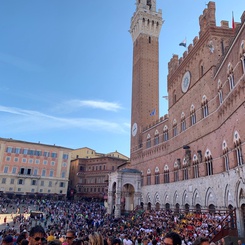They say you always remember your first time especially when it comes to clicking that final, magical brick into place and completing your first LEGO® set. The same goes for a Meccano® set. Frankly, who can forget that?
Now, close your eyes and imagine. You open up the box in front of you and to your surprise, there is only one type of bricks. Disappointed, aren’t you? The close-your-eyes-and-imagine-this-or-that was just for fun, it is very unlikely to happen in real life. But when you think about it, if you had to build an object, an animal or even a human being, you would quickly realize that only one type of bricks won’t do the trick, you would lose interest because combinations are not unlimited. The more bricks you have, the easier it is for you to come up with new combinations. There are of course the combinations offered by LEGO® so that you “tame” the set, get familiar with the different bricks. Nevertheless, we shouldn’t forget that imagination plays an important role in the process; it can lead us to the discovery of new, more personal combinations.
Amazon.com vs. FNAC-DARTY, Is It Even an Issue?
We have recently been made witnesses to the growing competition, the battle for supremacy between retailers such as Amazon.som and FNAC-DARTY. Amazon is an American electronic commerce and cloud computing company. Operating in 15 countries, the tech giant is the largest Internet retailer in the world as measured by revenue and market capitalization. Operating in ten countries, FNAC-DARTY is a European leader in the retail of entertainment and leisure products, consumer electronics and household appliances. If we were to compare nothing but figures, it becomes clear the group FNAC-DARTY could not, at least not for the moment, compete with the tech giant. But this would be a simple and naive way of approaching business analysis. In business, things are never clear-cut, in any case not from a strategic perspective. Let us go back to the beginning, to our LEGO® bricks. A company with an important assortment of elements will have a significant advantage over a competitor. The company which has fewer bricks, well, it has fewer bricks... i.e., it has fewer possibilities and therefore significantly fewer combinations to offer; it cannot come up with a compelling value proposition as it cannot entirely meet the client’s expectations.
Now, let us close our eyes and let us look at the bricks both companies possess; the bricks they have to click into place if they want to meet their clients’ needs: they both have online stores and a network of independent sellers called a marketplace. Should we remind our readers that Amazon.com does not own any physical stores whereas the group Fnac-Darty has a dense network of more than 500 stores some of which are Fnac stores with Darty departments? It becomes clear that Fnac-Darty has an important assortment of bricks and can offer solutions far more interesting than Amazon’s. Let us take the following example: A client orders an article online. He or she can choose home delivery but he/she can also choose to pick it up in-store. There, a salesperson may assist the client and convince him or her to buy other associated products. Among the range of delivery options, the client can once again choose home delivery. Let us be clear, clients are free to go purchase the article elsewhere especially if the competitor offers more attractive prices. And they won’t hesitate to do it.
The reader of this article can study a company business structure. But business structure does not end with the number of independent sellers on the marketplace nor does it end with the number and locations of physical stores. It is interconnected with focal points and guidelines that could provide customers with the easiest access to products. These are of course few of the bricks composing the corporate ecosystem. Unfortunately, we cannot list them all. Thus, companies with complex business structures have a potential advantage over their competitors.
We are talking about an advantage that is potential. For a company to benefit from the assortment of its bricks, it must get hold of the right bricks. Assortment and variety do not constitute an advantage. Companies must make sure they are in possession of different types of bricks; bricks that fit. Then, they have to work with those bricks to ensure they are a source of added value to the customers. A company should also take into account the obsolescence of certain bricks. Let us face reality and ask the right questions: If tomorrow we decide to purchase a TV, which retailer will we choose to buy it from? A Fnac salesperson or Amazon’s digital assistant Alexa who knows everything there is to know about us!
Bricks of Tomorrow
Some key features of tomorrow’s business are being implemented as we speak (digital assistants for example); nevertheless, companies are adjusting their strategy in the short term. One needs to survive today to combat tomorrow. We are not at all surprised when Rakuten (formerly called PriceMinister) and Boulanger decide to put their bricks together. In food retail where competition is only just beginning, partnerships between digital natives and experts in physical in-store experience are being made: Carrefour and Walmart join forces with Google. Walmart has acquired the Indian brand Flipkart; Amazon.com - Whole Foods and is announcing a partnership with Monoprix in France.
What Does Theory Say?
Well, theory, and here I am referring to the approach of complex systems developed by ESSEC’s Chair “Edgar Morin de la complexité” confirms my point of view. Nevertheless, several key points are to be kept in mind. First, we have to pay attention to how bricks communicate, to how they click into place. In other words, mortar is as important as the rest. How different bricks communicate might be a source of temporary difficulties and companies should prepare to face them. I will draw the following analogy: Some retail stores allow customers to scan the barcode before proceeding to checkout lanes. As products have already been scanned, the wait time should be reduced. And if the expected wait time is reduced for me, it is necessarily reduced for everybody else. The latter observation leads us, theoretically, to the realization that checkout lanes accepting scanned articles will be congested. It goes against the original idea. Clients are not stupid, they opt for different strategies. The new brick has backfired and the promise of quality is annulled by the very phenomenon of congestion. Store capacity becomes crucial if the quality of service is to be maintained.









